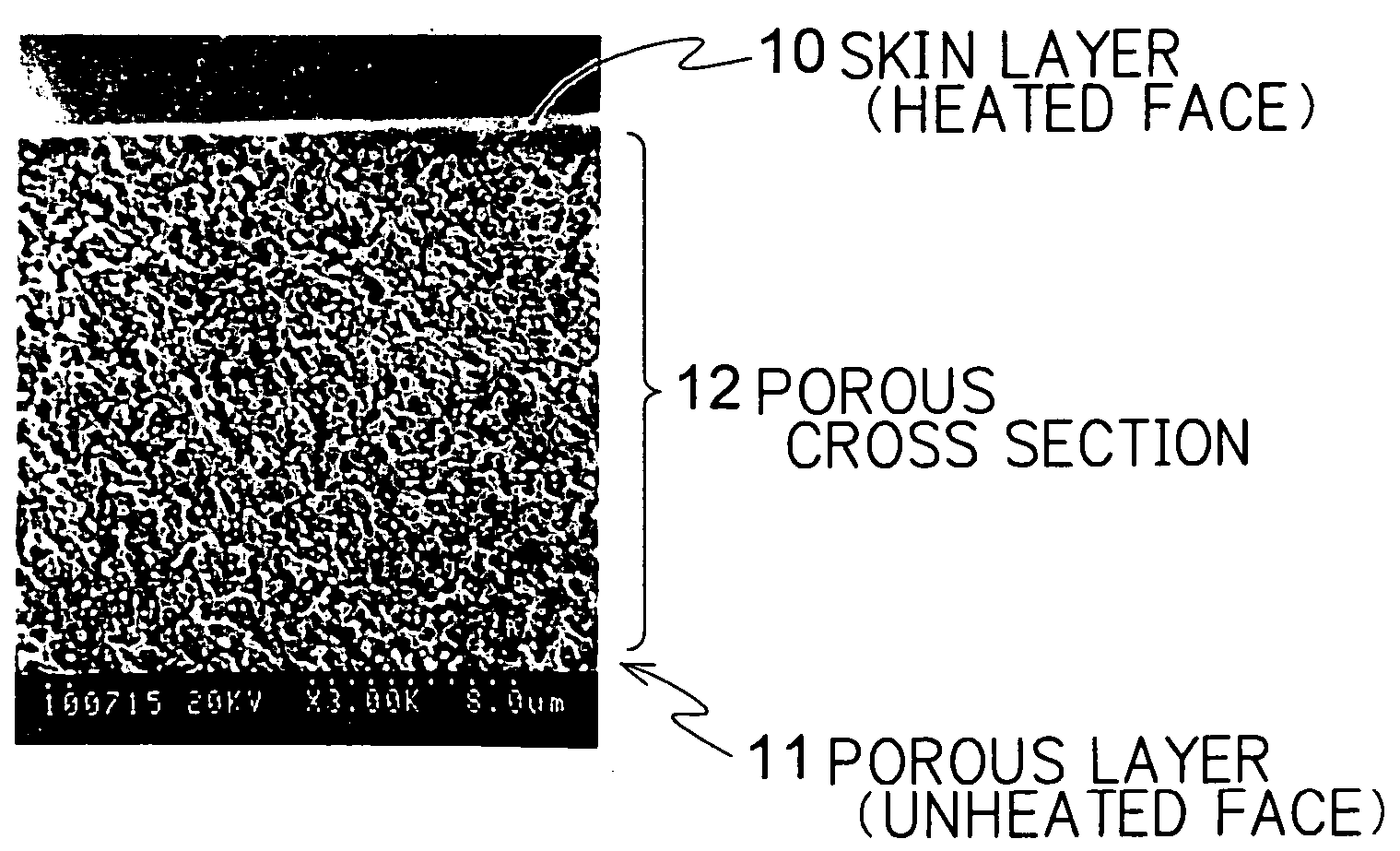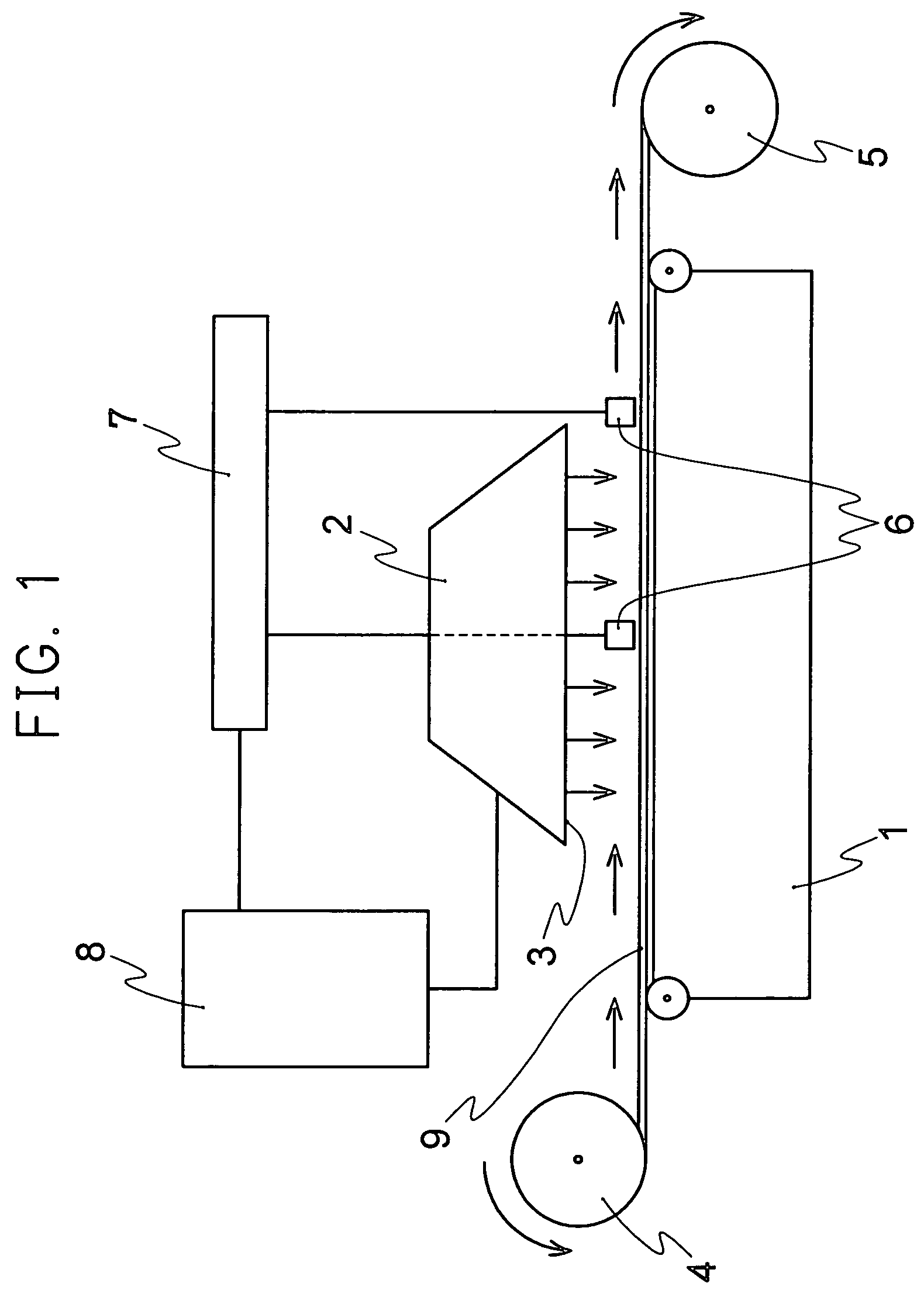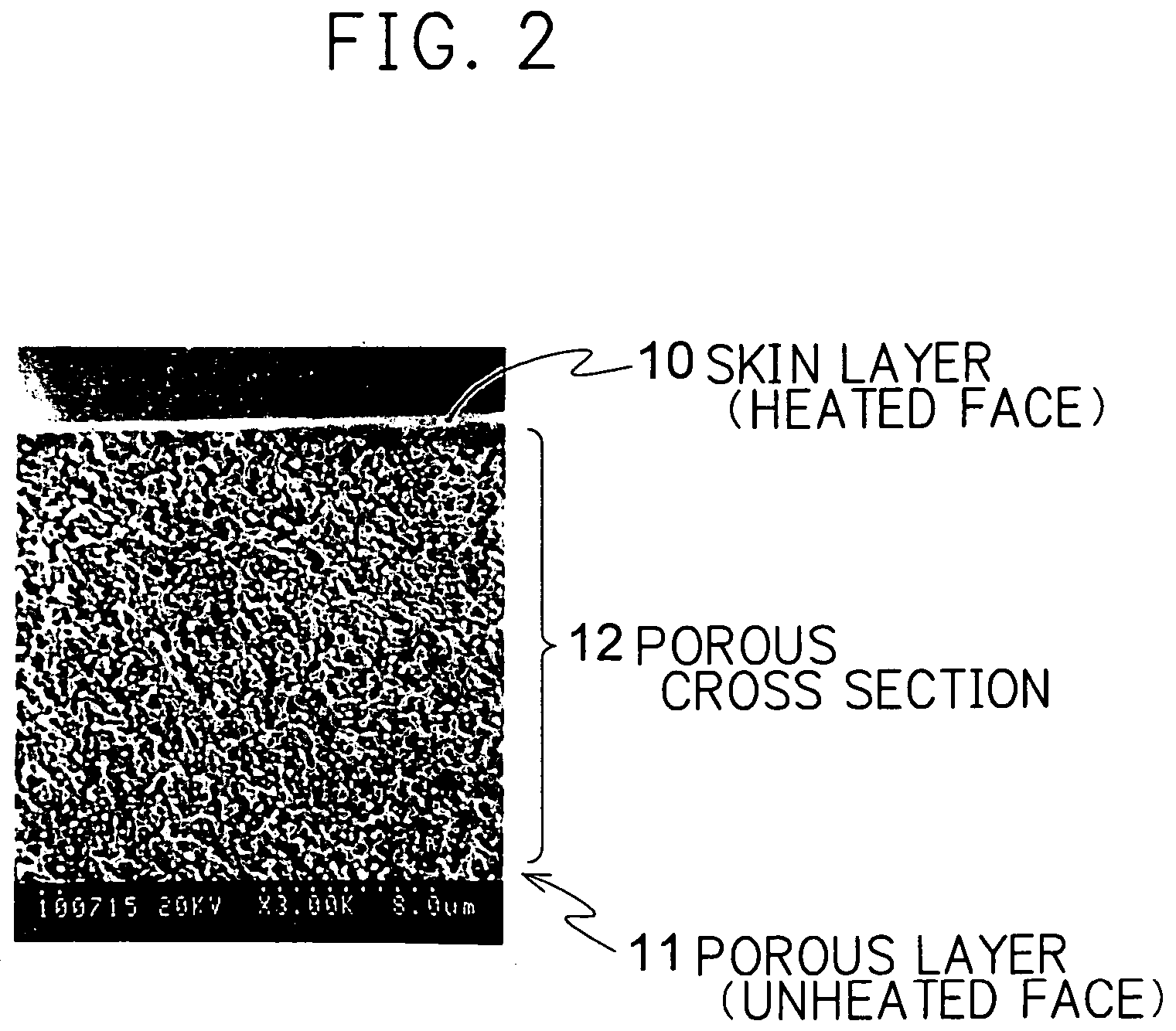Asymmetric porous polytetrafluoroethylene membrane for a filter
- Summary
- Abstract
- Description
- Claims
- Application Information
AI Technical Summary
Benefits of technology
Problems solved by technology
Method used
Image
Examples
examples 1 to 3
[0075]A paste mixture containing 80 parts of PTFE fine powder prepared by emulsion polymerization and 20 parts of naphtha was extruded using an extruder at a reduction ratio of 80:1 to obtain a rod-shaped extruded article having a diameter of 18 mm. The rod-shaped extruded article was rolled in the extrusion direction using a calender roll having a diameter of 500 mm to obtain a rolled sheet having a width of 260 mm and thickness of 0.2 mm. The sheet was then heated to 260° C. in an oven to remove naphtha. Thereafter, the sheet was pre-heated to 300° C. and simultaneously drawn in a biaxial direction to a drawing ratio of 500% in the rolling direction and a drawing ratio of 300% in a direction orthogonal to the rolling direction. Maintaining this drawn state, the sheet was heat-set by heating at 340° C. for 15 seconds. The sheet was then cooled to room temperature to obtain a symmetric porous PTFE membrane having a thickness of 20 to 25 μm, a maximum pore diameter of 0.5 μm and a po...
PUM
| Property | Measurement | Unit |
|---|---|---|
| Thickness | aaaaa | aaaaa |
| Contact angle | aaaaa | aaaaa |
| Reflectance | aaaaa | aaaaa |
Abstract
Description
Claims
Application Information
 Login to View More
Login to View More - Generate Ideas
- Intellectual Property
- Life Sciences
- Materials
- Tech Scout
- Unparalleled Data Quality
- Higher Quality Content
- 60% Fewer Hallucinations
Browse by: Latest US Patents, China's latest patents, Technical Efficacy Thesaurus, Application Domain, Technology Topic, Popular Technical Reports.
© 2025 PatSnap. All rights reserved.Legal|Privacy policy|Modern Slavery Act Transparency Statement|Sitemap|About US| Contact US: help@patsnap.com



